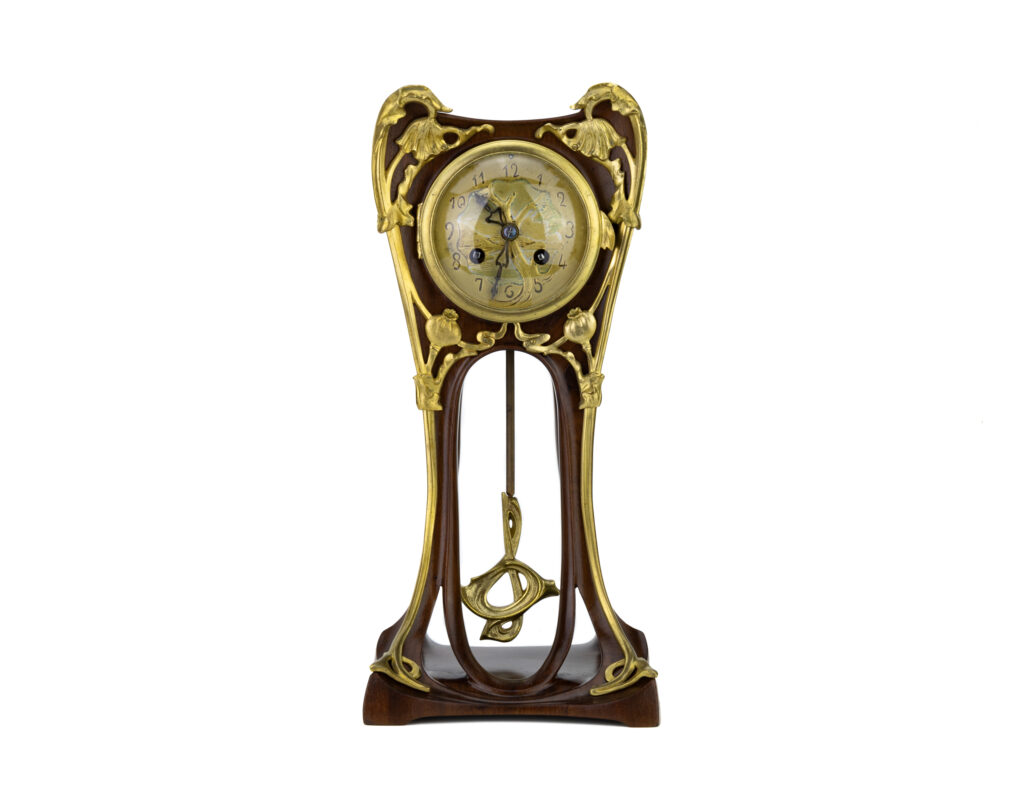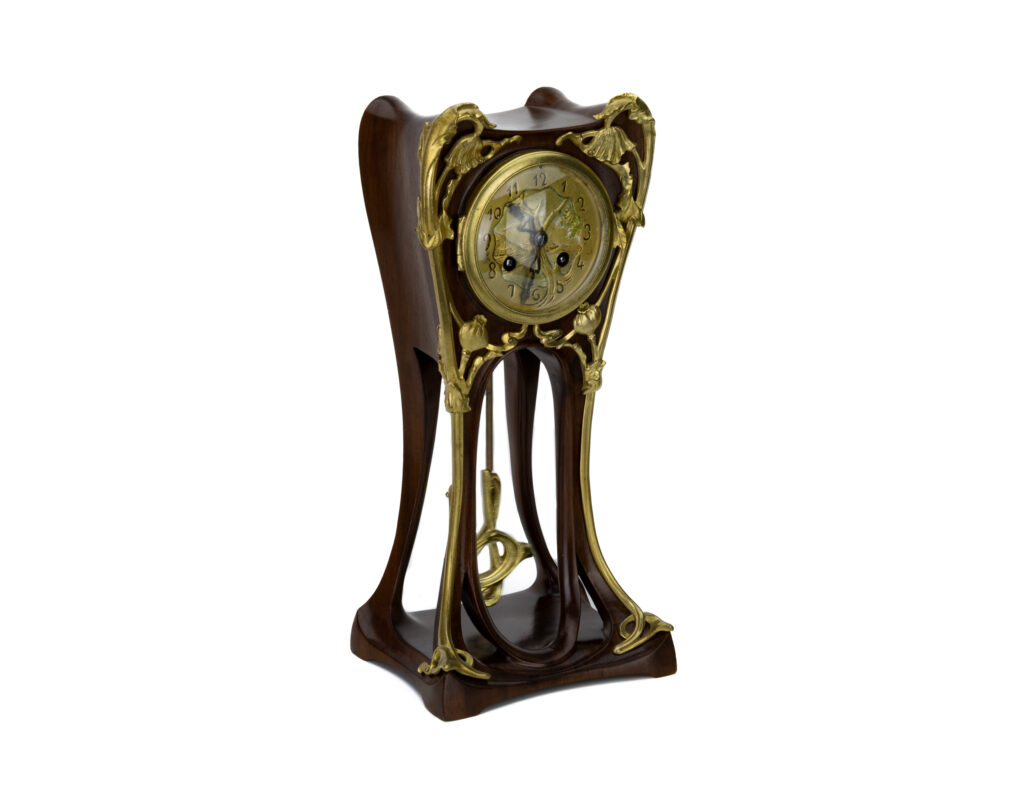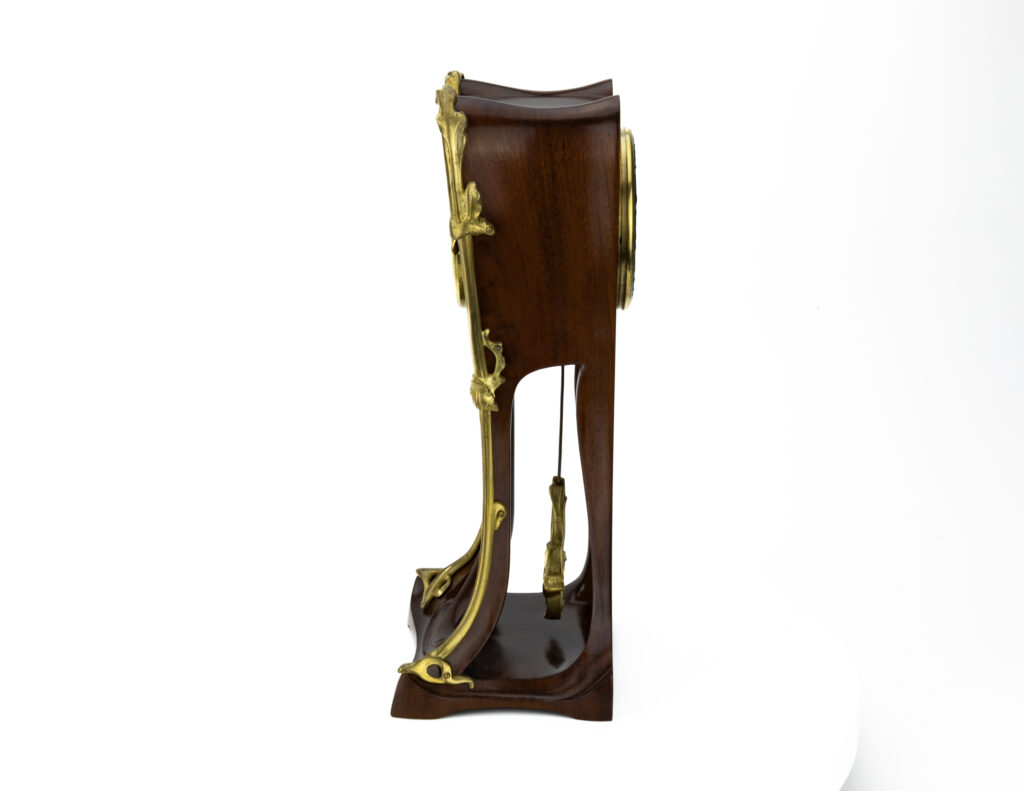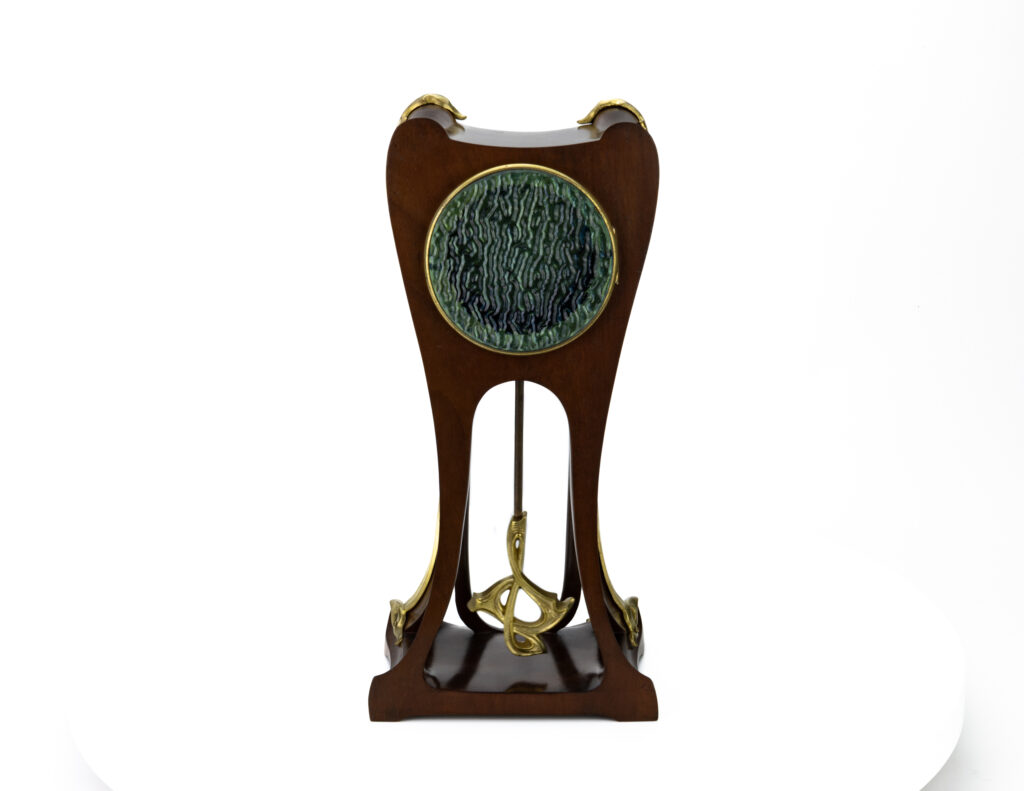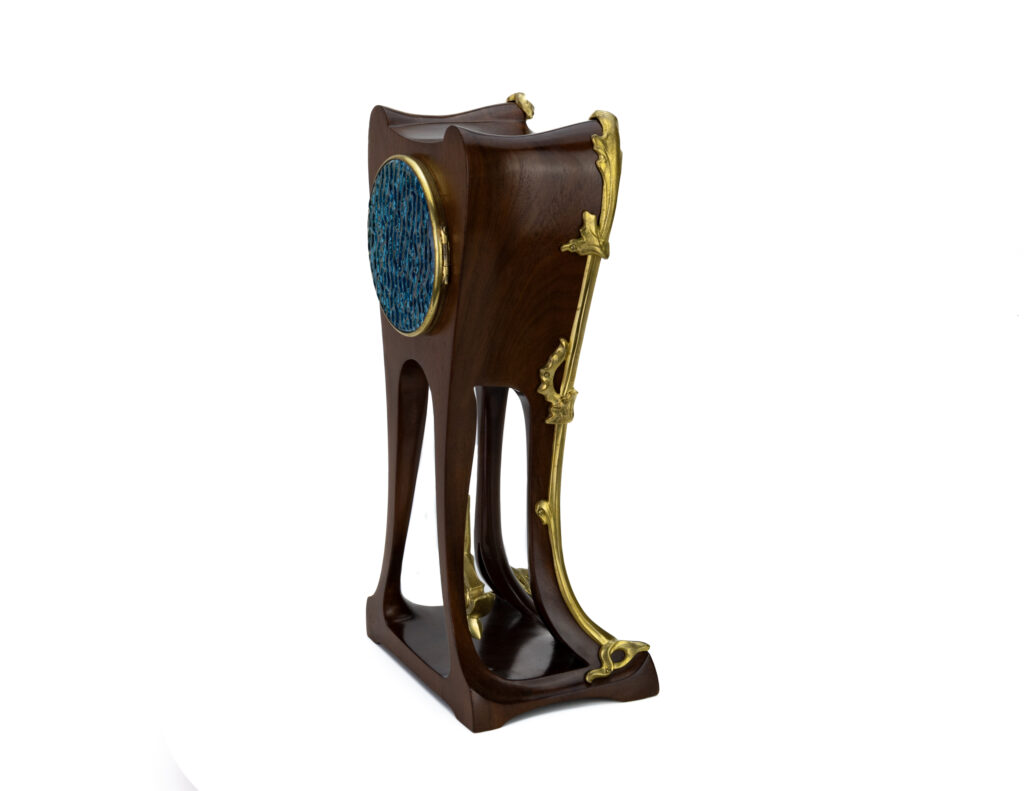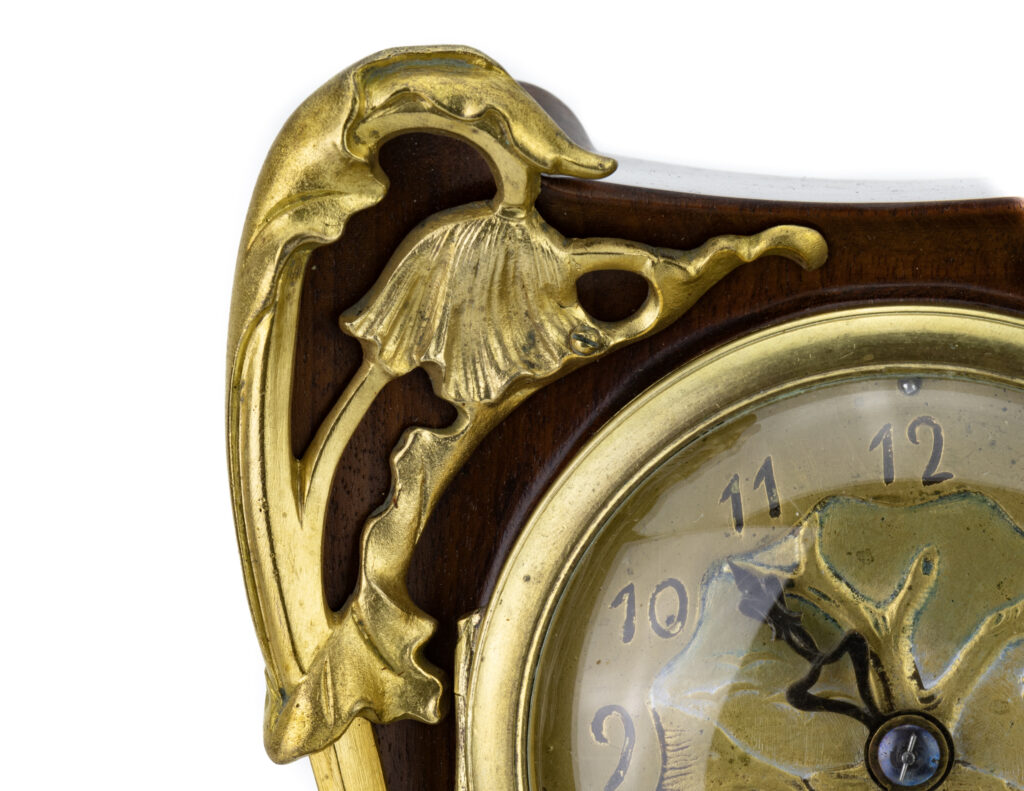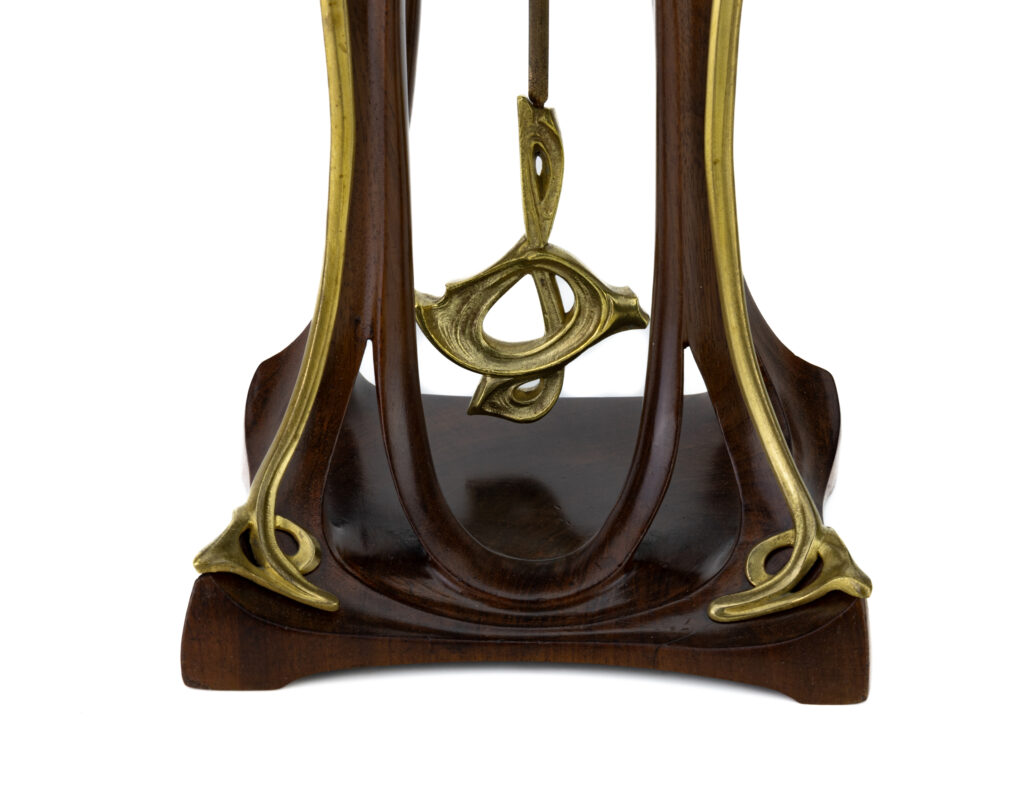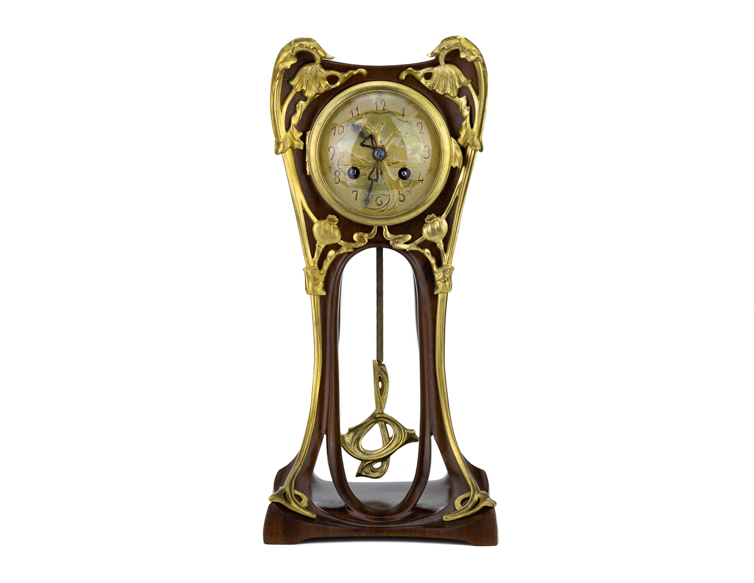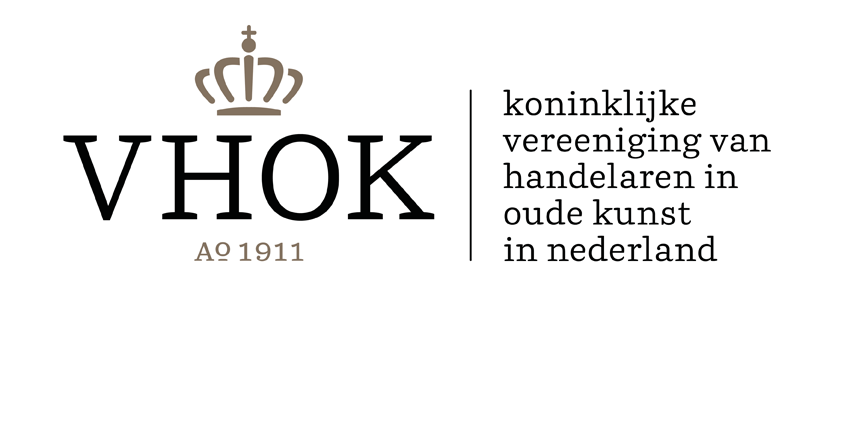Price: This item has been sold.
Interested in a similar item? Please click here to send us a message using the contact form.
Description:
Louis Majorelle – art Nouveau mantel clock – Model “Aux Pavots”
This rare Art Nouveau mantel clock, crafted by the renowned French designer Louis Majorelle from Nancy, is an exceptional example of the refined style and craftsmanship that characterizes this period. The clock is carved from solid Cuban mahogany and features beautifully detailed carvings with four openwork, curved uprights, resting on a solid base with flowing edges. The gilded bronze decorations, designed in the form of poppies (Model Aux Pavots), emphasize the elegance of the natural forms so typical of the Art Nouveau movement.
The bronze movement features a polychrome dial with a lacustrine decoration and an openwork balance mechanism with whip-like decorations. This mechanism is a masterpiece in itself and perfectly complements the organic forms of the clock. The mantel clock was made around 1900 in the heart of the Art Nouveau movement in Nancy, the home of Louis Majorelle.
Although the striking mechanism was removed at an earlier stage, the movement is in perfect condition thanks to a recent service, ensuring the clock functions flawlessly. Both the gilded bronze mounts and the mahogany frame are in excellent condition, contributing to the rarity and value of this unique piece. This clock is the ultimate example of French Art Nouveau, where craftsmanship and nature harmoniously unite.
About Louis Majorelle – Master of Art Nouveau Design
Louis Majorelle (1859-1926) was one of the most influential designers and furniture makers of the French Art Nouveau movement. Born in Toul, France, he settled in Nancy at a young age, where he played a prominent role in the École de Nancy, an artistic movement focused on decorative arts inspired by nature.
Majorelle’s furniture and decorative objects are renowned worldwide for their organic forms and natural motifs, often inspired by flowers such as irises, water lilies, and poppies. He worked with high-quality materials like wood, bronze, and glass, developing a unique style that combined functionality with aesthetic innovation. His collaboration with other famous artists, such as glassmaker Émile Gallé, further strengthened his reputation as one of the leading figures of Art Nouveau.
Majorelle’s designs, like this mantel clock, are infused with the natural forms and motifs that define his work. His creations were internationally acclaimed, particularly at the Exposition Universelle in Paris in 1900, where his work made a lasting impression. Today, his pieces are considered masterpieces of Art Nouveau, beloved by collectors and museums around the world.
